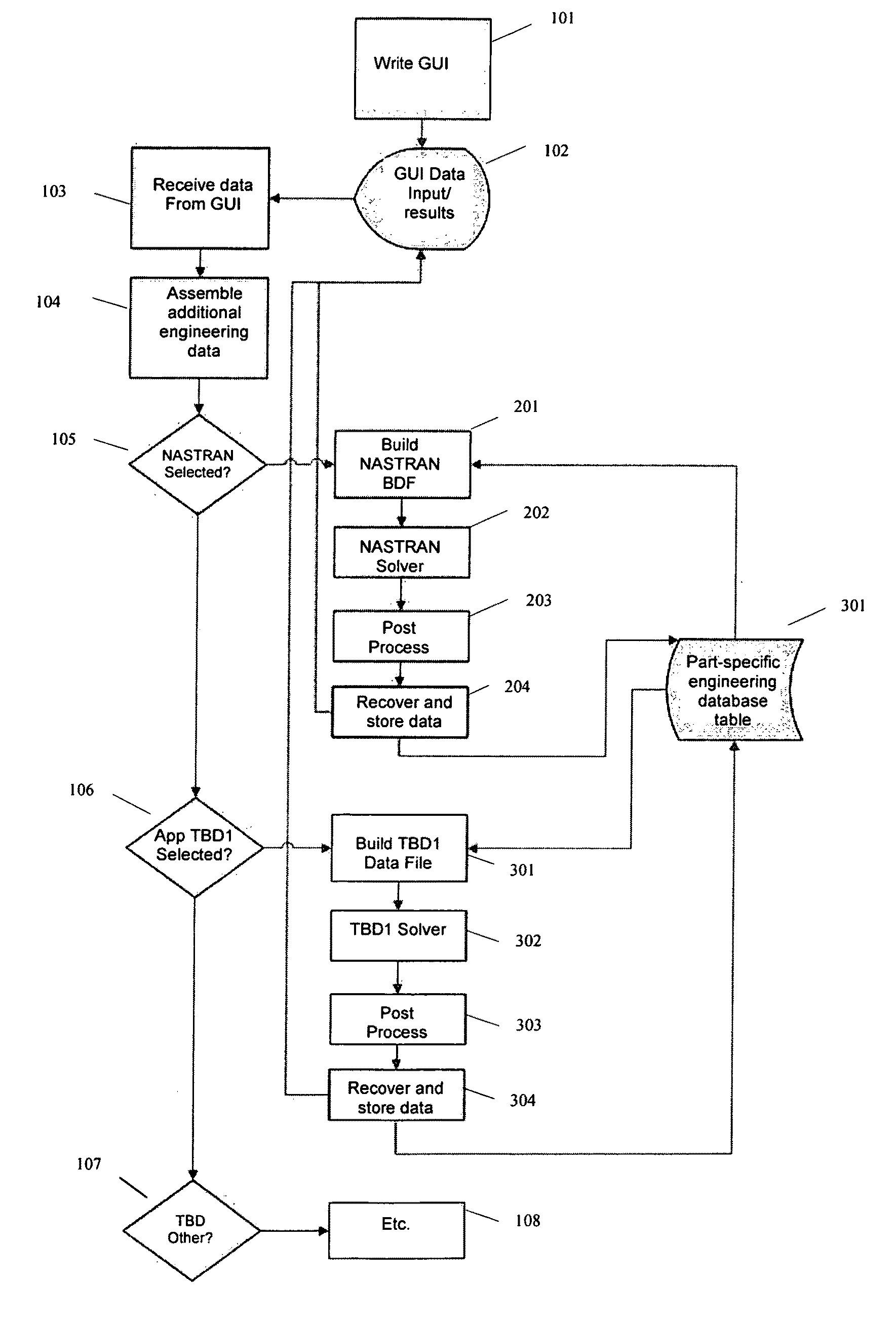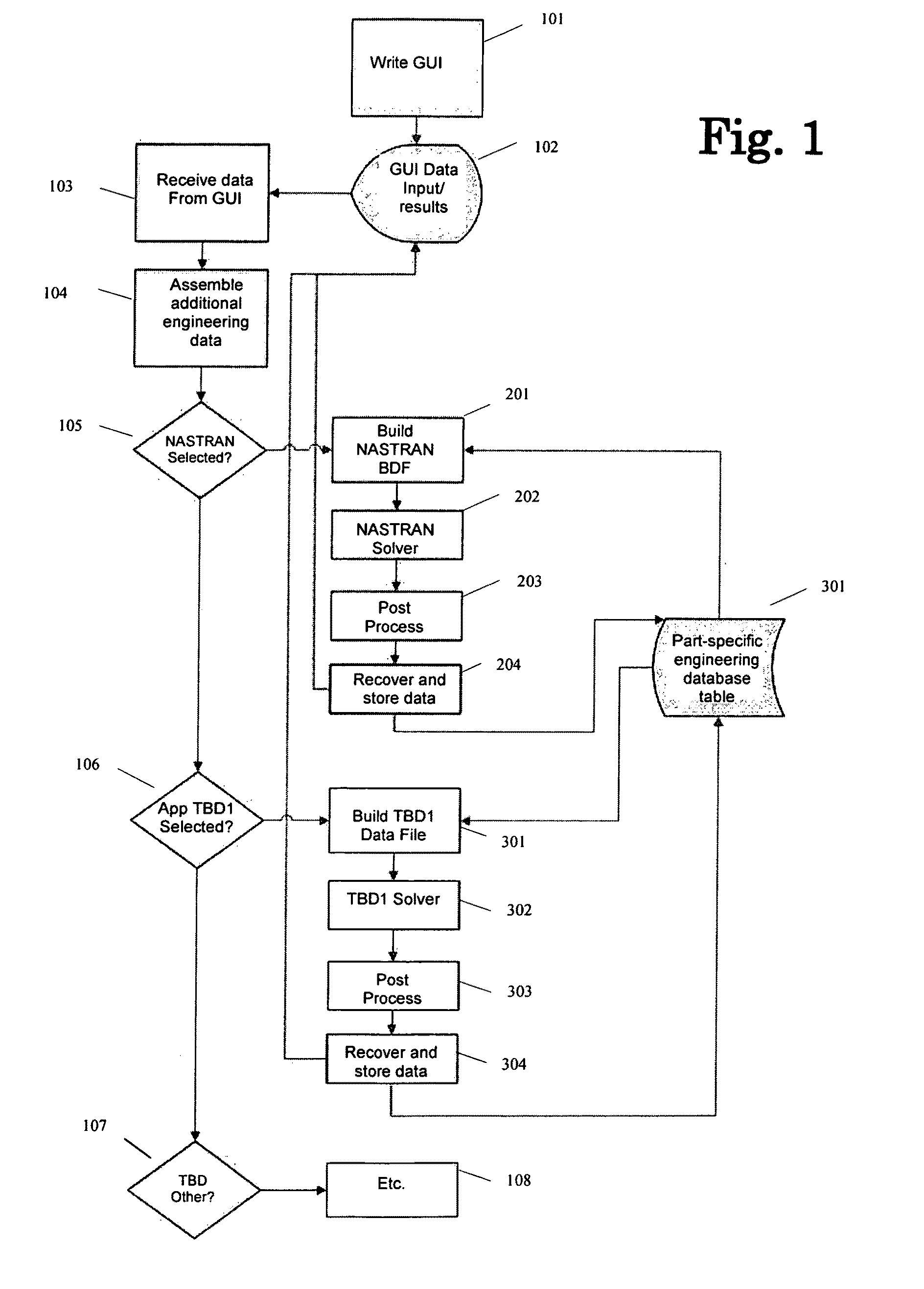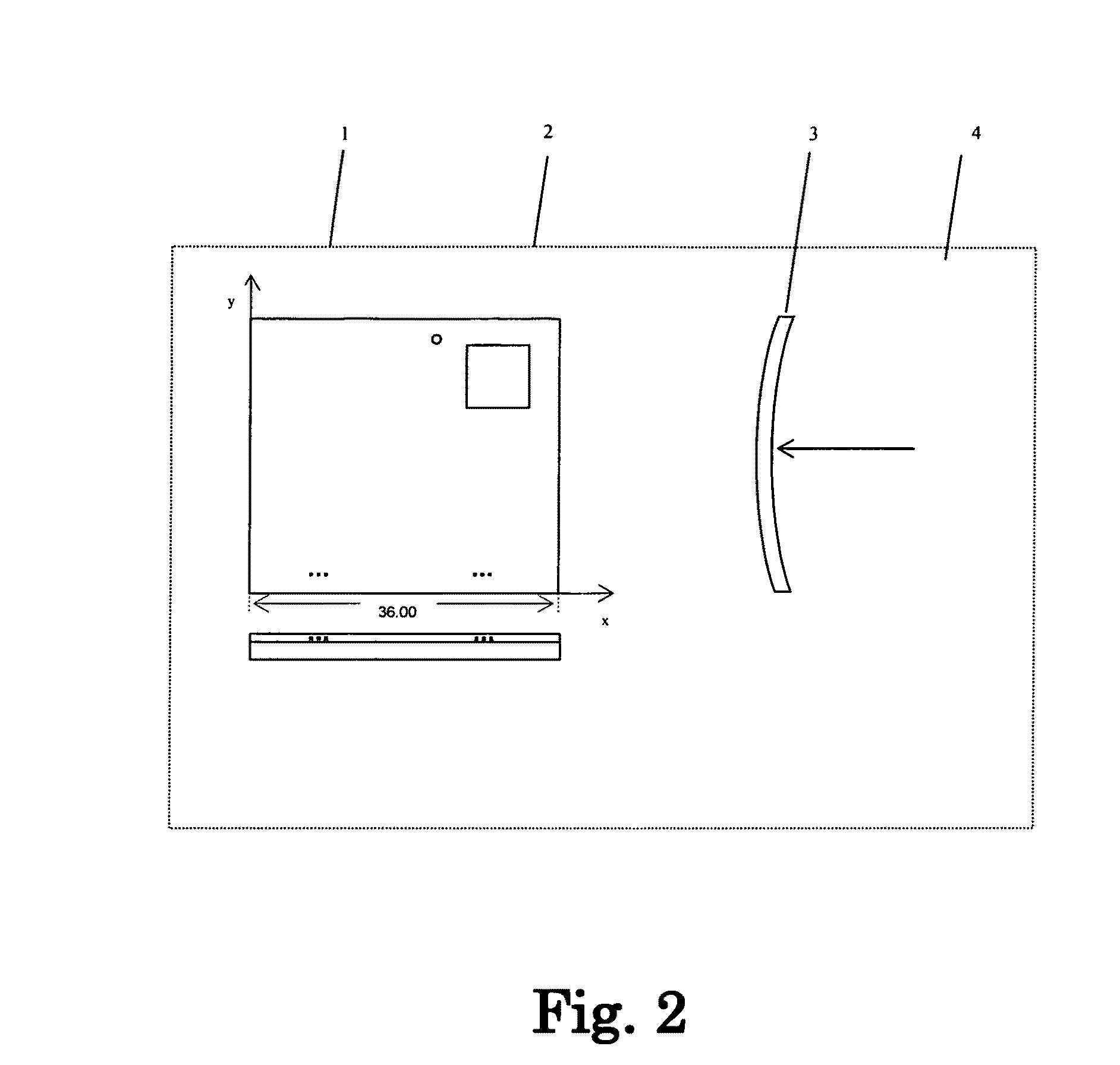Automatic Repair Planning and Part Archival System (ARPPAS)
a technology of automatic repair planning and part archival system, applied in the direction of nuclear elements, instruments, nuclear engineering, etc., can solve the problems of unnecessarily increasing aircraft downtime, operational risk, maintenance costs, etc., and affecting the methods and processes used for aircraft structural repair
- Summary
- Abstract
- Description
- Claims
- Application Information
AI Technical Summary
Benefits of technology
Problems solved by technology
Method used
Image
Examples
example 1
[0075]Example 1 demonstrates how ARPPAS operates to achieve an accurate repair analysis. Consider the case, depicted in FIG. 2, of a representative aircraft part similar to a fuselage access door 1 having a reinforced composite panel having square dimensions of 36 in. per side with a needed repair 2 centered at (27,27) with repair length and width both equal to 9 inches, and a curvature 3 as shown in FIG. 2.
[0076]The original panel surface is specified as a glass composite material, for example five layers of Cytec CE 9000 / 7781 prepreg fiberglass. Current maintenance practice is to replace the damaged material with the same glass composite material, processing it the same as the original material. For example, five patches of new Cytec CE 9000 / 7781 prepreg fiberglass, each with the correct size to cover the 9 inch by 9 inch repair area 2 (with appropriate detailing, such as tapered contours to assure a bond at the perimeter) would be cut and laid into the panel cutout area. A base a...
example 2
[0099]Example 2 demonstrates how ARPPAS operates to achieve an accurate repair analysis of a composite aircraft part that has had a previous repair. Consider the case of a representative aircraft part, as depicted in FIG. 5, with a curvature similar to a fuselage access door 17 having a reinforced composite panel 15 having square dimensions of 36 in. per side with a needed repair centered at (25,26) on the part whose overall dimensions are 36 in. by 36 in. The part has already had a 4 in. by 4 in. repair 16 centered at coordinates (27,27) composed of graphite composite material, the last previous repair state. The part had been previously analyzed using ARPPAS and the earlier repair had been found to be acceptable, using a process as described previously in Example 1, but with the geometric specifications that define this particular repair instance, as described above and in more detail below.
[0100]One of the functions accomplished automatically during the prior ARPPAS analysis was ...
example 3
[0134]This example illustrates ARPPAS as applied to an aircraft part having a reinforced panel design with reinforcing webs made of a different material than the panel cover, but comprising the same textile.
[0135]The textile of this example is CE—9000—7781, representative of certain aircraft parts likely to be analyzed by ARPPAS.
[0136]The panel is 36 inches by 36 inches and has 2 inch webs and an inch of curvature along proximal and distal sides.
[0137]This design is similar to what might be presented in the analysis of an access door. The boundary conditions represent a hinge along one edge. The panel is otherwise unconstrained in this example. These constraints are sufficient to calculate the response to residual tensile strains imposed by the composite repair curing process.
[0138]Additional boundary conditions and loads may be easily added to the formulation. These loads may be user selectable or prescribed by an engineer or other authority. For example, additional boundary condit...
PUM
 Login to View More
Login to View More Abstract
Description
Claims
Application Information
 Login to View More
Login to View More - R&D
- Intellectual Property
- Life Sciences
- Materials
- Tech Scout
- Unparalleled Data Quality
- Higher Quality Content
- 60% Fewer Hallucinations
Browse by: Latest US Patents, China's latest patents, Technical Efficacy Thesaurus, Application Domain, Technology Topic, Popular Technical Reports.
© 2025 PatSnap. All rights reserved.Legal|Privacy policy|Modern Slavery Act Transparency Statement|Sitemap|About US| Contact US: help@patsnap.com



